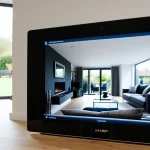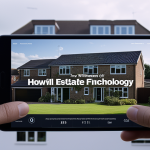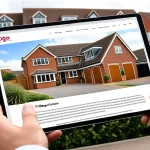Key Ways Modern Technology Improves Comfort in UK Homes
Smart home technology significantly enhances comfort in UK homes by automating routine tasks and creating personalized living environments. For instance, smart thermostats learn household habits to adjust heating efficiently, ensuring consistent warmth without manual input. This technology is especially beneficial given the UK’s variable climate, optimizing indoor conditions while saving energy.
Energy-efficient appliances are another critical element. These devices reduce utility bills and environmental impact by consuming less power, yet they maintain or improve performance. Refrigerators, washing machines, and lighting equipped with smart sensors adapt to usage patterns, providing convenience alongside sustainability.
Also to read : What are the most effective ways to insulate UK properties?
Advanced heating and cooling solutions—such as heat pumps with smart controls—offer precise temperature regulation and humidity management. These systems outperform traditional options by responding dynamically to external weather changes and internal occupancy, which is crucial for maintaining comfort in older UK properties prone to drafts.
Together, these innovations form a network that increases daily comfort through intelligent control, energy efficiency, and adaptability; all tailored to the specific needs and design of UK homes. Smart home technology is no longer a luxury but a practical addition for households seeking convenience and well-being.
Also to discover : What are the most effective ways to insulate UK properties?
Practical Integration of Modern Technology in UK Housing
Integrating home automation into both traditional and modern UK homes requires thoughtful adaptation. Many older properties feature unique layouts and building materials, which can pose challenges for installing smart devices. For instance, solid walls or period features may limit wireless signal reach or complicate wiring. Solutions include using mesh Wi-Fi systems to improve coverage or selecting battery-powered smart devices that require minimal installation effort.
Successful integration often hinges on choosing compatible components that work together seamlessly. Homeowners should plan for scalability, ensuring systems can expand as needs evolve. In modern UK housing developments, new builds often come pre-wired with smart technologies, simplifying installation and improving overall performance.
Real-life UK case studies reveal that careful planning during installation can minimize disruption. For example, retrofit projects demonstrate how integrating smart heating controls and lighting boosts comfort without extensive remodeling.
However, challenges remain, such as balancing aesthetics with functionality and navigating differing technical standards. Tips for seamless installation include consulting professional installers familiar with UK housing styles and prioritizing user-friendly control interfaces to enhance daily convenience. This practical approach helps UK homeowners fully benefit from modern technology, enhancing comfort and usability.
Enhancing Home Security and Peace of Mind
Improving home security with smart technology is key to increasing comfort and peace of mind in UK homes. Smart security systems include features such as motion sensors, video doorbells, automated locks, and surveillance cameras. These allow homeowners to monitor their property remotely through smartphone apps, providing real-time alerts about unusual activity. This instant awareness can significantly reduce anxiety around home safety.
How exactly does smart security boost residents’ comfort? By enabling proactive control and monitoring, occupants feel safer whether at home or away. For example, a smart lock can be remotely controlled to let in trusted visitors without physical keys, which is especially convenient in busy households. Furthermore, integrating security systems with home automation means lighting and alarms can activate automatically when suspicious movement is detected.
Cost considerations are important when choosing smart security. Popular UK systems vary in price, typically offering subscription or one-time payment options to suit different budgets. Though initial costs may seem high, the investment often translates into reduced risk and enhanced wellbeing. Choosing scalable solutions ensures homeowners can upgrade security features as their needs evolve, securing both property and comfort effectively.
Cost Considerations and Government Incentives
Smart home technology often requires an initial investment, which can vary depending on complexity and brand. UK homeowners frequently ask: What are the upfront costs and potential savings? Typically, costs include purchasing smart devices, installation fees, and sometimes subscription services. However, energy savings from efficient heating, lighting, and appliances often result in lower utility bills, offsetting expenses over time.
The UK government supports adopting energy-efficient technology through various incentives. Schemes like the Energy Company Obligation (ECO) provide grants to improve home insulation or install smart heating controls, directly reducing installation costs. These incentives encourage widespread adoption by lowering financial barriers.
Long-term value comes from reduced energy consumption, increased property value, and improved comfort. Additionally, smart systems continuously adapt to user behaviour, enhancing efficiency and cost-effectiveness over time. Homeowners can maximize benefits by combining multiple smart solutions, such as smart thermostats and energy-efficient lighting.
Understanding these cost factors and available government programs empowers UK homeowners to make informed decisions, balancing upfront investment with sustained savings and enhanced comfort.
Current Trends and Future Outlook for Modern Home Comfort
Smart home technology continues to evolve rapidly, shaping the comfort landscape in UK homes. Current trends include voice-controlled assistants, integration of Internet of Things (IoT) devices, and increased use of AI-driven systems to personalise settings automatically. These advances enhance comfort by simplifying control and anticipating user preferences without constant manual adjustments.
Consumer adoption rates for these technologies are rising steadily in the UK due to growing awareness and affordability. More homeowners now seek interconnected devices that work seamlessly, creating a unified, adaptive home environment. For example, AI-enabled heating systems not only adjust temperatures but also learn from daily routines and weather patterns, increasing comfort and energy efficiency simultaneously.
Looking forward, the future of smart homes promises even greater integration. Innovations such as predictive maintenance alerts and more sophisticated environmental sensors will improve reliability and indoor wellbeing. The evolving needs of UK homeowners—especially those balancing tradition with modern demands—drive this innovation.
Overall, trends indicate that smart home technology will become essential in delivering tailored comfort, convenience, and sustainability, making UK homes more responsive and enjoyable places to live.





